BMW’s been making bikes for nearly 100 years (its first bike was the Boxer-engined R32, built in 1923 to replace the aircraft engines it was banned from producing after WWI). But it’s probably fair to say that its most exciting bikes have appeared during the 21st century. A change of senior management at the turn of the millennium brought a new focus on high performance machinery with class-matching engine power, light weight and the most advanced chassis, engine and electronic technology available.
The first fruits of this new approach came in 2004, with the 167bhp K1200 S hyperbike, followed by the naked K1200 R. Both these bikes could match the likes of the class-leading Suzuki Hayabusa and B-King in terms of power and handling, and offered flagship technology, like electronic suspension adjustment, advanced ABS, traction control, and much more.
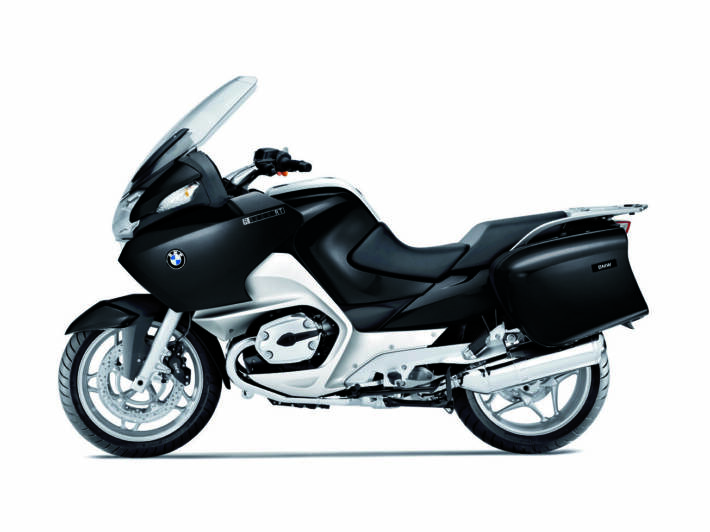
It was 2009 when BMW really smashed its staid reputation, when it launched its first full-bore superbike. The S1000 RR was designed to compete in WSBK, and matched the very best of the Japanese litre superbikes from the off. Making 193bhp and weighing just 203kg wet, it was also priced to sell, and quickly put BMW right at the top of the class.
Since then, the basic S1000 RR engine has featured in the XR adventure tourer and R supernaked, as well as the latest M1000 RR WSBK homologation special.
In the background, the Bavarian firm was also working away on its Boxer range, with the R1200 GS being developed all through the 2000s and 2010s, gaining power, sophistication and technological advances. The latest version of the BMW Boxer engine is a 1250 variant, making around 135bhp, with superb rideability.
Finally, BMW has managed to surprise us all through the last 20 years or so. Its K1600 brought an inline-six engine to the bike world for the first time in decades, while the latest R18 uses the biggest ever Boxer motor in a classic-styled custom cruiser. Add in the F-series parallel twins and the new G-series entry-level singles, and you have one of the widest ranges of machinery outside Japan.
Loads of hot machines to choose from then – but here’s our pick of the best BMWs from the last twenty years…
1 K1200 S
This knocked us for six when it appeared in late 2004. Up till that point, BMW’s inline-fours had all used the weird laid-down setup pioneered by the 1983 K100. That powerplant developed over the years into first a 16-valve 1100, then a 1200 unit, which featured in the super-beefy K1200 LT mega-tourer and K1200 RS heavyweight sports tourer.
The horizontally-mounted architecture brought a load of packaging headaches though, and had long passed its development limits. Increasing the bore made it longer, crippling the chassis layout, while increasing the stroke made it wider, limiting cornering potential. BMW had pushed its luck with the RS in particular, the long-stroke layout limiting peak power for the size and expense.
So an all-new setup was needed. And just as it would do a few years later with the S1000 RR superbike, BMW held its nose and simply followed the crowd. Rather than follow its usual contrary path, it went for a transverse-mounted inline-four engine, with DOHC, 16-valves, fuel injection, wet clutch and six-speed gearbox, bolted into a twin-spar aluminium frame – just like the Suzuki Hayabusa and Honda Super Blackbird.
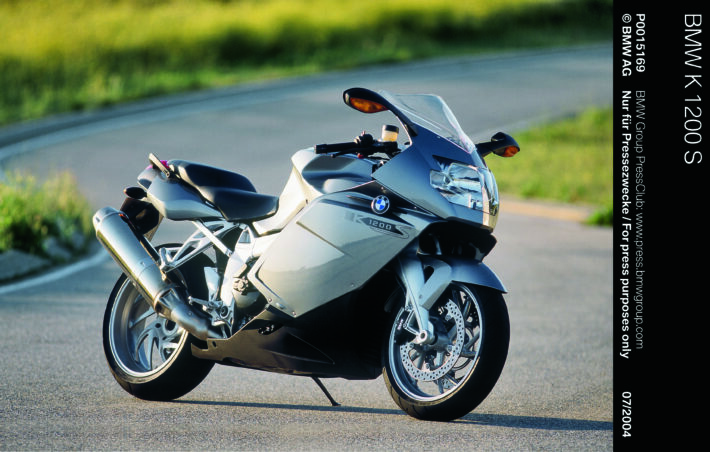
Okay, the engineers still kept a couple of BMW eccentricities: the K1200 S stuck with shaft drive rather than a chain, with the firm’s single-sided Paralever suspension setup. The front end was also unusual, with an all-new Hossack-type suspension system, called Duolever. Here, a cast aluminium wheel carrier, a bit like a vertical swingarm, was located by a double wishbone linkage operating a single central shock absorber unit.
This gave a really stable front end feel, while also separating out the braking and suspension forces. That allows a softer suspension unit without excessive diving under braking, for better road handling and feel.
On the road, the K1200 S was a cracking ride.
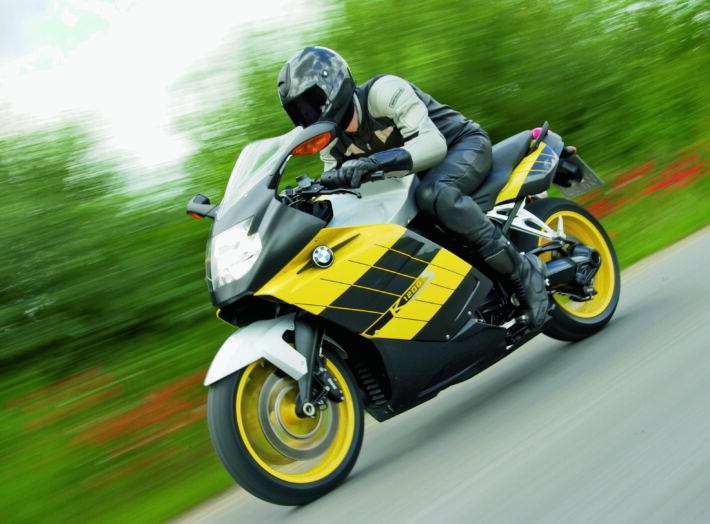
The engine was a stonker, putting out 167bhp in a massively grunty fashion. The fuel injection gave smooth, clean throttle response, and it even made a brilliant hard-edged sound from the intake and exhaust. The chassis was more than up to handling the power, and with a kerb mass around 248kg, it was pretty light for the power at the time. It came with stacks of electronic aids too: BMW’s integral ABS, traction control, trip computer, cruise control, heated grips and optional electronic suspension adjustment – a first on a bike.
The K1200 S was replaced by the K1300 S in 2008, which added more power and torque from a bigger 1,293cc engine. The chassis was mostly as you were, but there were even more electronic options, including a factory-fit quickshifter, another first on a bike. Even more amazingly, BMW finally dropped its old-school three-button indicator system in favour of a conventional single-button setup.
2 R1250 GS Adventure
The Boxer-powered BMW GS traces its roots back to R80-based prototypes in the 1970s – and this R1250 GS Adventure is its ultimate development. Launched in late 2018, it used a new 1250 version of the water-cooled flat-twin engine which featured the firm’s ShiftCam variable valve timing setup.
This has inlet camshafts with sliding outers, that are moved from side to side by the engine management system, engaging one of two separate cam profiles, one optimised for low-speed grunt, the other for high-speed peak power. The result is even more peak power – now a healthy 136bhp – with Euro5 emissions compliance and strong low-down drive. It’s the most powerful Boxer engine the firm has produced, and is a really impressive unit.
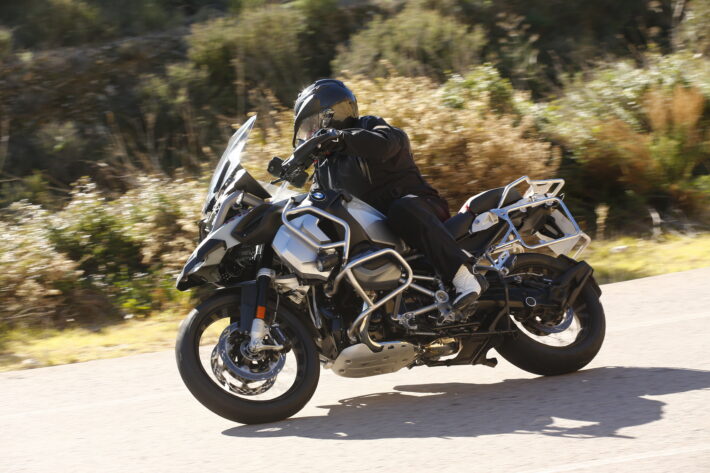
The rest of the 1250 GS A is just as solid. The standard Boxer front and rear suspension systems – Telelever and Paralever – work well on the big adventure touring machine, with the back end also incorporating the low-maintenance shaft final drive. Telelever looks like a normal fork setup at first glance, but the large wishbone linkage transmits braking forces into the main chassis, rather than through a pair of fork springs. That allows a softer suspension setup without excessive diving under braking.
The 1250 GS A also gets its pick of the latest BMW technology in terms of rider aids and luxury gizmos. You can enjoy sat-nav, LCD colour dash, heated grips and seat, tyre pressure monitoring, Bluetooth phone integration, emergency SOS calling, cornering traction control and ABS, wheelie control, power modes, electronic suspension adjustment, quickshifter, and much more. Add in the usual Adventure refinements – a massive fuel tank, engine and bodywork crash bars, longer travel suspension and wire-spoked wheels, and you have the ultimate heavyweight on/off road adventure mile muncher.
On the move, the sensation of mass from the 268kg wet GS A disappears – a little. On the road it’s fine, but once you venture off the asphalt, you’ll need to keep your wits about you. The big GS A can handle serious terrain in the hands of an expert – two minutes on YouTube will show you plenty of examples. But if you’re less experienced, it can be a bit intimidating. And if you do topple over, just picking up a fully-loaded GS Adventure with panniers and topbox on a muddy trail is a massive task on its own.
One of BMW’s offroad training schools will pay massive dividends if you’re looking to hone your skills – and one of the first things they teach is the smart way to pick one up (bend at the knees and use a handlebar end…).
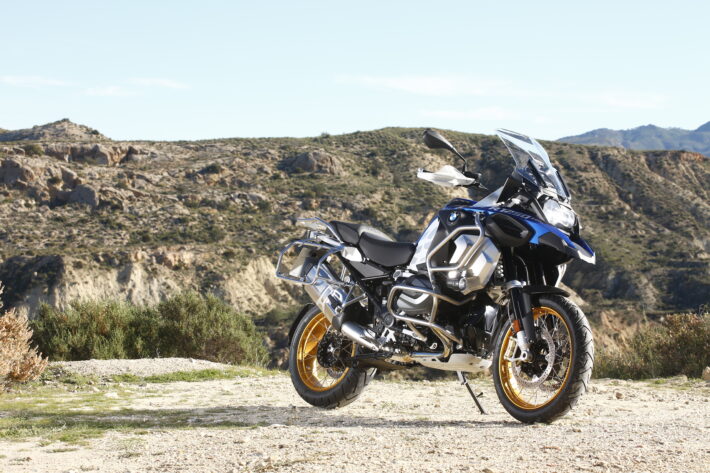
Keep the R1250 GS Adventure on the Tarmac though, and it’s an amazing piece of kit. The new 136bhp motor lifts the performance up towards the more conventionally-powered machinery, and while you’ll need to look at the S1000 XR if you must have 160+bhp in your adventure tourer, the 1250 does a great job.
The riding position is high and dominates the road, with the full LED lighting helping to clear the way through traffic. It’s comfortable for the long haul, even two-up, and with all the electronic aids, it’s a proper luxury machine. Pricey, and not ideal for shorter riders, the R1250 GS Adventure still shows how it earned its place at the top of the sales charts.
3 S1000 RR
It might be hard to imagine nowadays, but before the early 2000s, BMW’s reputation as a sportsbike maker was pretty poor. It had sold various ‘S’ and ‘RS’ versions of its Boxer twins and laid-down K-series fours over the years, but compared with mainstream Japanese superbikes, it was a long way off.
From the 1970s on, when inline-fours from the big Japanese firms took off, the Munich firm was playing catchup. Kawasaki’s GPZ900R, Suzuki’s GSX-R750, the Yamaha FZR1000R and Honda’s mighty FireBlade – they all existed in a different league from BMW’s R100 S, K75 S, K100 RS and R1100 S.
In 2009 though that all changed. BMW had already taken a massive leap forward in performance with the K1200 series launched in 2004, but now the firm was moving completely outside its comfort zone, with nothing less than a full-bore 999cc superbike.
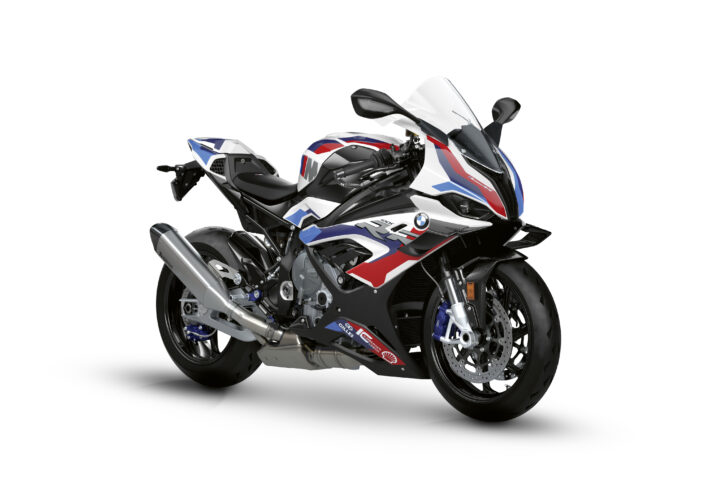
Launched at the Monza round of the WSBK series, the S1000 RR had incredible power and weight figures: 193bhp and 203kg wet. And it followed the established superbike orthodoxy completely, with none of the usual weird BMW compromises. Chain final drive, twin-spar aluminium frame, high-end USD front forks and massive braced rear swingarm – every part of the chassis could have appeared on a mainstream Japanese superbike (though the standard of build and performance was a cut above).
It performed like a mainstream Japanese superbike too – which is more of a compliment than it might sound. Those firms had been honing that sort of bike for decades – the list above of the GPZ900R, GSX-R750, FZR1000R and FireBlade is an incredible canon of historical work, and no-one could make fast, light, well-handling sportsbikes like the big four Japanese firms.
Until now. On track and road, the S1000 RR could go toe-to-toe with the best from the Far East. The engine was a corker, with a hard-edged rort to the exhaust, strong low-down drive and mental top end. The chassis was lithe and responsive, nimble to steer and with strong brakes. The electronic rider aids were advanced for 2010 too, with cutting-edge ABS, traction control and rider power modes.
Best of all, it wasn’t priced out of the market either. BMW hadn’t added on a huge price premium like Ducati or Aprilia did with their high-end superbikes, and The RR was on par with the Japanese models in terms of showroom price tags.
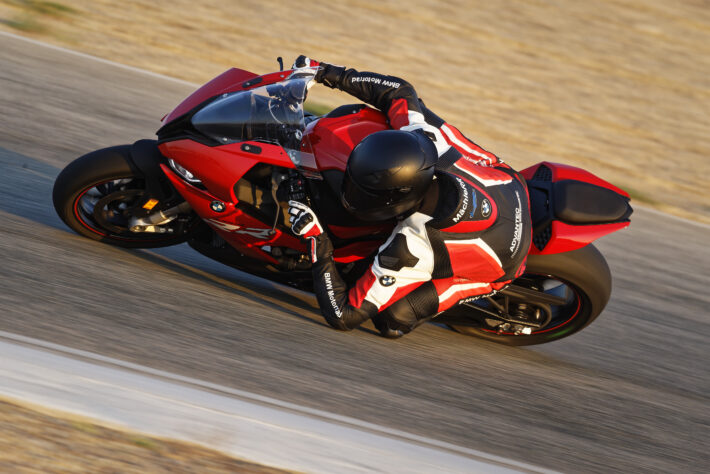
That first generation S1000 RR put BMW right in the superbike game, and the updates since have maintained its position. It’s not had the race success you might expect – though it did take the firm’s first TT win in 75 years in 2014.
The latest version weighs as little as 193.5kg wet in M-Package form, with a ShiftCam variable valve-timing engine making 207bhp. Not enough for you? Then the limited-edition superbike homologation race replica M1000 RR adds titanium conrods, two-ring race pistons and aerodynamic carbon fibre wings…
4 R1200 GS
By 2002, the BMW R1150 GS was very well established at the top of the ‘unlimited’ adventure touring class. The unlikely concept of a 1,130cc flat-twin, shaft-driven offroad bike weighing more than a quarter of a tonne had crept up on a bike market still obsessed with 600cc sportsbikes (in the UK at least). Ewan McGregor and Charley Boorman’s Long Way Round TV series, which would catapult the GS to mainstream global stardom, was still a year or so away. And while the big BMW adventure machine was becoming a common sight on the roads, it didn’t dominate – yet.
The R1200 GS helped it to take that extra leap forward. Launched in 2003, it was a big advance on the 1150, dropping a hefty 25kg in weight, and adding 15bhp peak power. The new Boxer engine went up in capacity, from 1,130cc to 1,170cc, and gained a new balancer shaft for smoother running, as well as a sixth gear. The styling was sleeker and less industrial-chunky, while the tech options were also raised a notch.
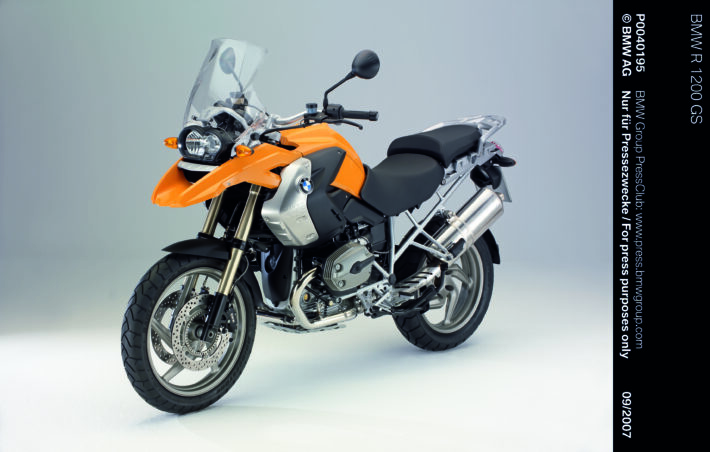
The ABS setup used BMW’s new integral system, which linked the front and rear brakes, and also added an electric servo assist pump, for increased stopping power. Heated grips, taller windscreen and hard luggage made touring life easier, and the R1200 GS Adventure that launched a year later added longer-travel suspension, larger fuel tank and standard crash bars.
The basic chassis was refined over the model years, but stuck with using the Boxer engine as a stressed member, with both front and rear suspension mounted on the beefy crankcases. Telelever front and Paralever rear both used adjustable monoshocks and cunning linkages to optimise handling and suspension performance to suit the weight of the bike.
The 1200 GS went through a series of engine upgrades over the next decade and a half, first getting a new DOHC cylinder head design in 2009, with one exhaust and one inlet valve operated by each horizontally-positioned camshaft, with the exhaust and intake ports remaining front and rear.
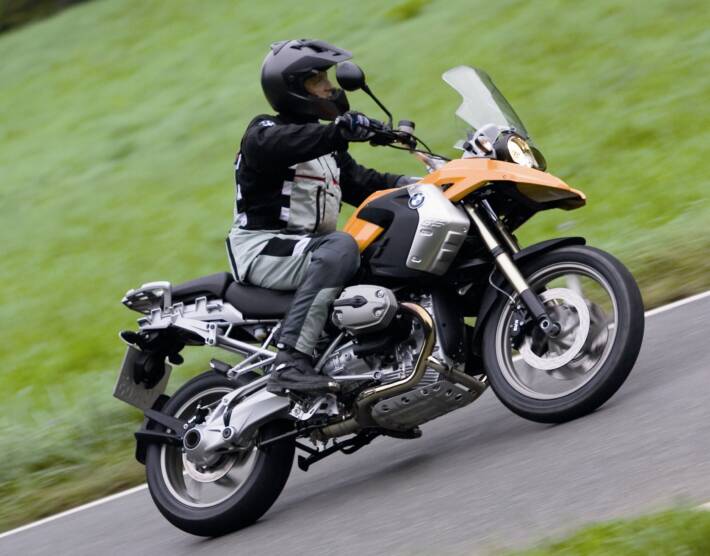
Later, the R1200 engine gained water cooling for 2013 rather than the oil/air cooling used up till that point. BMW also switched to an all-new head design, with vertical intake and exhaust ports, so each camshaft operated two inlet or two exhaust valves. In its final incarnation up to 2018, the fifth generation 1200 GS made 125bhp, and was festooned with electronics.
Optional kit included semi-active electronic suspension, cornering ABS and traction control, cruise control, rider power modes, quickshifter, hillstart assistance, keyless ignition, tyre pressure monitoring and much more.
5 RnineT
When BMW brought out the water-cooled R1200 Boxer engine, you might have thought it would retire the old oil-cooled Boxer motor to the museum. But in 2013, a new range of Boxers began to appear, using that old engine in a modern retro-styled roadster.
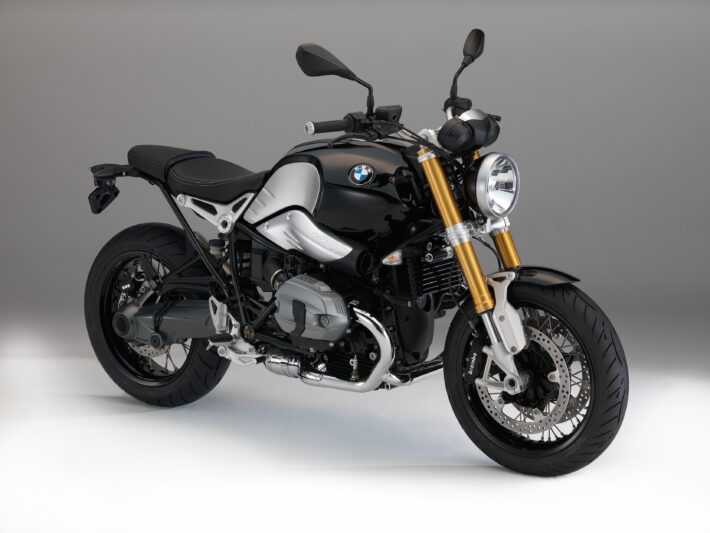
The first model in this new range was the RnineT, named after the R90 S of 1973, BMW’s 1970s superbike, and it was actually a bit of a parts-bin special. The oil-cooled DOHC version of the 1,170cc 1200 engine was fitted into a basic naked roadster chassis, with Paralever rear suspension and shaft drive, but a conventional telescopic fork up front, borrowed from the S1000 R. The brakes were also high-end parts off the S1000, and the RnineT came with a fairly high spec that belied its retro looks. It was a bit on the heavy side at 222kg wet, but was both great fun to ride, and handsome to look at.
It was an instant hit, and BMW was soon selling as many as it could build, selling to fans who wanted a simple, classic retro machine, that was also easily customised. BMW had designed parts like the seat unit, sidepanels, exhaust and tank to be easily swapped out for custom parts – and it even produced and sold its own range of stylish aftermarket components.
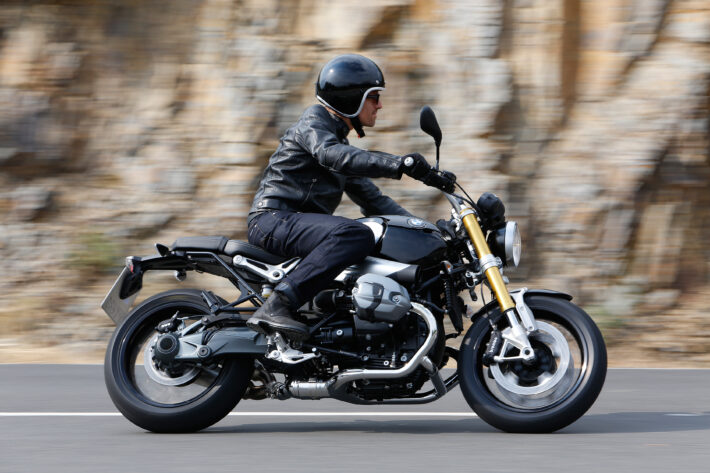
The original RnineT was joined by a variety of new versions over the next few years. The cheaper entry-level RnineT Pure used lower-spec suspension and brakes, the Scrambler added high-level exhaust and fork gaiters, and the Racer sported a natty half-fairing and Motorsports paint. The Urban G/S was perhaps the best looker though, taking inspiration from the original R80 G/S offroader first seen in 1980.
All the RnineT models are customisable, all use the same basic engine and frame setup, and all have been big money spinners for BMW. Not bad for a parts-bin special with an engine from the 1990s…
6 K1600 GT
BMW’s reputation as a sportsbike builder might be fairly recent – but its touring chops have never been in doubt. Since it launched the first fully-faired bike in the 1970s – the R100 RS – the Munich firm has specialised in making comfortable, luxurious, distance machines that transport rider and pillion, plus luggage, at speed and in style for hundreds of miles a day.
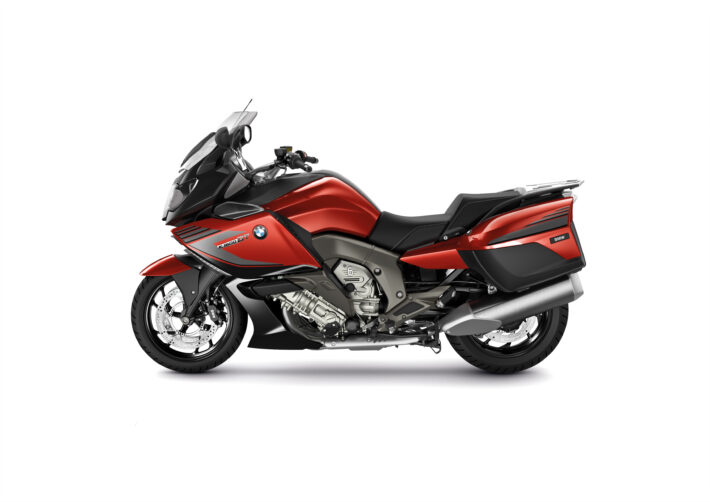
By the end of the 2000s though, its high-end K1200 LT luxury tourer was getting a bit long in the tooth. It was the last bike to use the laid-down K-series engine, and was overdue an overhaul.
You might have expected the firm to use the excellent 1,293cc engine used in the K1300 S, R and GT models. It put out around 175bhp and was a smooth, torquey unit, which would have easily matched the likes of the Honda Gold Wing in the ultra-touring powerplant stakes. But no.
BMW instead pulled out an utterly stunning new motor – an inline six-cylinder unit, with a transverse layout, DOHC, 24 valves, fuel injection and a canted-forward block. The chassis setup was similar to the K1300 range, with Duolever front suspension and Paralever rear, and the twin-spar aluminium frame passing over the top of the engine.
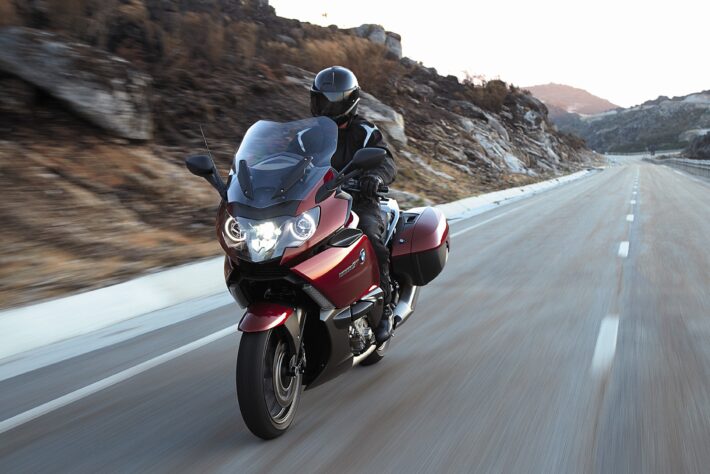
The engine itself was a marvel of compactness, barely wider than the K1300 unit, while cramming in an extra two cylinders. The straight-six layout made for a naturally smoother engine, both in terms of the firing pulses and the balance of the six-cylinder crankshaft. Power was around the same as the K1300, but from a larger 1,649cc capacity, so the delivery was stronger low-down, with massive grunt from just above tickover.
There were two original K1600s – the GT and the GTL. The GTL added an integrated hard top box and pillion seat backrest to the standard hard panniers on the GT, while both had a very high touring spec. Standard and optional kit included heated seats and grips, cruise control, electronic suspension adjustment, tyre pressure monitoring, traction control and integral ABS. Later models got a massive TFT colour LCD dash, keyless ignition, reverse gear, gearbox quickshifter, hillstart, semi-active suspension, Bluetooth phone integration, and lots more.
7 HP4 Race
BMW generally produces machines that are a bit pricier than normal – but steers away from really wild exotica. This is the exception though. The HP4 Race is a limited-edition, track-only bike, which is actually even higher spec than a full-on world superbike racer. Some of the parts – like the carbon fibre wheels – aren’t permitted in superbike racing, while the engine uses almost the same tune as an actual World Superbike racer.
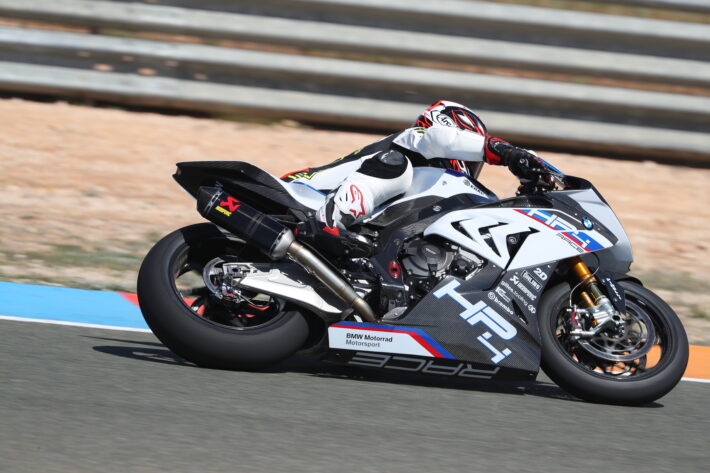
The brakes feature nickel-plated GP-spec Brembo GP4-PR four-piston calipers up front, the front forks are Öhlins FGR300 gas-pressurised units, and the high-end kit also includes a carbon fibre frame, 2D competition dashboard, WSBK switchgear and the handsome swingarm is by MotoGP chassis firm Suter.
The resulting specs are jaw-dropping. The motor makes ‘at least’ 215bhp from its mixed WSBK/World Endurance tune – apparently just a few bhp less than a factory superbike. But it’s the dry weight that really hits you – just 146kg. That’s a smidge under 23 stone – so the HP4 Race probably weighs less than you and your mate sat down the pub…
We rode the HP4 Race at the UK press launch round Almeria circuit, and it’s fair to say that the performance is something else. The suspension and chassis setup is sublime, with the carbon fibre wheels and Pirelli slicks doing unspeakable things at the end of the ultra-spec Öhlins suspension.
The brakes are next-level in terms of power and feel, while the advanced traction control is utterly idiot-proof, gently cutting torque when it feels the need, as you try to ladle the gas on earlier and earlier out of the bends.
Down the main straight, the 215bhp race-tuned inline-four bellows like a murderous bull, slingshotting you forward like a gored matador flying over the bullring fence. Sure, the 1100cc V-four Italian superbikes can match the power, but the HP4 Race is an even livelier experience.
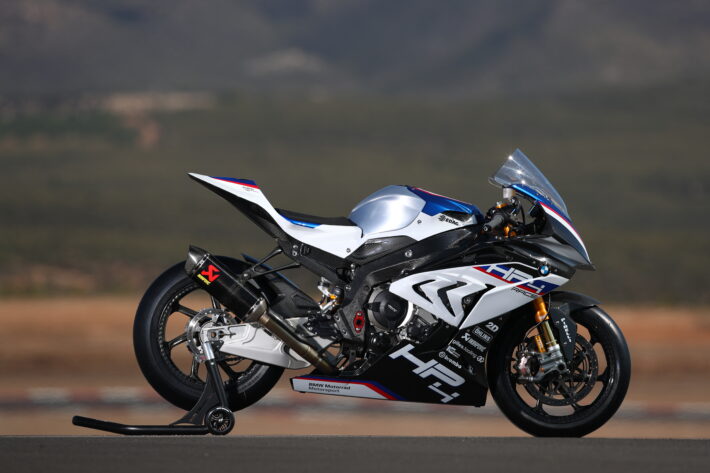
Sadly, it’s an experience that few will get to sample. Only 750 HP4 Races were made, and at £68k, they’re probably not going to be popping up cheap on Gumtree any time soon. Even at that price, BMW was reputedly set to lose money on each bike.
The brakes and suspension parts are a fortune off the shelf, while the carbon fibre wheels and frame would have cost hundreds of thousands to develop. Add in a hand-made Suter swingarm and the tuned engine, and you have a parts list which was probably nearer £100k in terms of retail prices.
8 F850 GS
The first 850 GS was the R850 GS Boxer in 1996, which was simply a smaller-capacity version of the R1100 GS, identical apart from cylinder and piston size. This F850 GS is totally different of course: it uses a parallel-twin engine, a layout pioneered by BMW in the F800 S and ST from the mid-2000s. Launched in 2018 alongside the F750 GS, the 850 used an all-new engine, with conventional balancer shafts in place of the nodding-beam balancer setup on the original F800 twin.
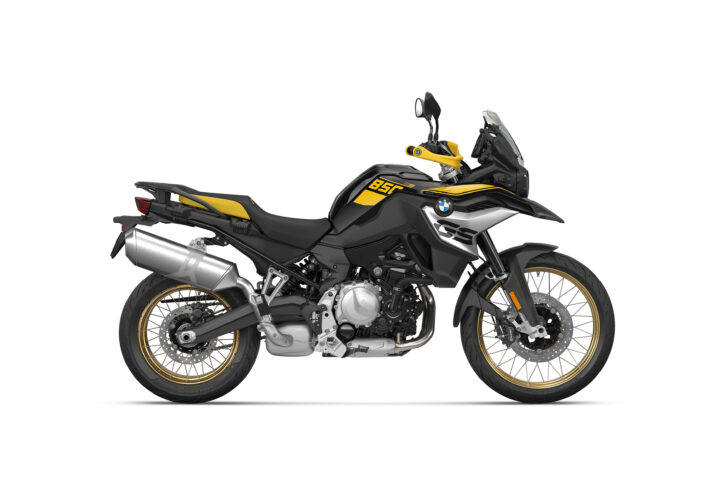
The new twin had four valves per cylinder, DOHC, water-cooling and ride-by-wire fuel injection, plus chain final drive. This solid, high-spec motor was bolted into a tough steel frame, with conventional USD front forks, a dual-sided swingarm with monoshock and dual front discs with Brembo calipers. Standard and optional accessories included electronic suspension adjustment, cruise control, heated grips, hard luggage, engine crash bars, keyless ignition, GPS navigation, colour LCD dash, and much more.
The 850 GS offered a more manageable adventure package than the R1200 GS family, with a smaller, more compact chassis and engine, lighter all-up weight and lower price. It made 95bhp – a decent power output for the class – and had sound offroad potential. Wire-spoked wheels with a 21” front, long-travel suspension, special offroad modes in the ABS and traction control, and sweet offroad styling all made for a strong attack on the likes of the Triumph Tiger 800.
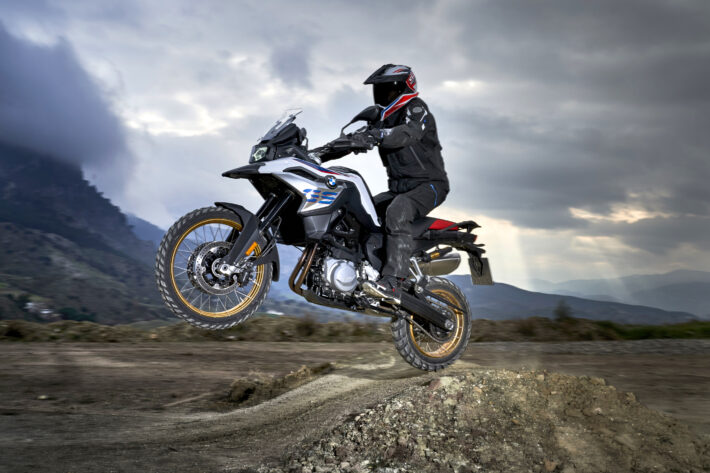
An Adventure variant gives even more hardcore adventure kit: bigger fuel tank, longer travel suspension and more offroad settings on the electronics package – but added even more weight. At 244kg it’s actually heavier than the old R1100 GS…
The F750 GS launched at the same time is a softer, more road-focussed machine, though it uses the same basic 853cc engine layout, just tuned for less power (76bhp). The seat is lower, there’s less suspension travel and it uses cast wheels, but is almost as capable as the bigger bikes, for less money and fuss…
9 R1200 RT
The letters ‘RT’ on a BMW go way back to the 1970s, when the R100 RT was first launched. It’s the mark of the firm’s sporty tourers, with plenty of gadgets and lashings of luxury, as well as a powerful engine and sorted chassis.
The R1200 RT took that recipe into the 2000s, replacing the R1150 RT in 2005 with the same uprated engine as seen on the R1200 GS, together with a new set of bodywork. The fairing was less whale-like than the 1150, with sleeker lines, but still gives barn-door levels of wind and weather protection. The chassis used the usual R-series kit, with the engine cases as the main structural part of the frame, Telelever front suspension and Paralever rear shaft drive setup.
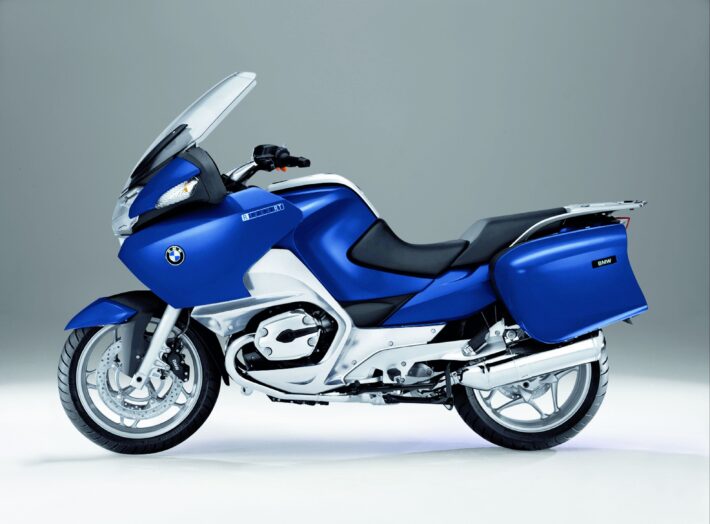
As with the GS, the 1200 RT lost a load of weight over its predecessor, down 20kg to 229kg, while adding power; now up to 110bhp. The motor was also smoother, thanks to a new balancer shaft, and also now had a sixth gear, used as a cruising overdrive in the RT. It came with the best factory-fit options available for BMWs at the time – so the likes of electronic suspension adjustment, integrated servo-assist ABS, traction control, GPS navigation, audio system, trip computer, electrically adjustable windscreen and standard hard luggage were all there from the start.
Over the next decade or so, the list of options extended even further, with keyless ignition, heated seats, cornering ABS and traction control, tyre pressure monitoring and semi-active suspension all becoming available. The engine was upgraded, first to the DOHC unit from the GS, then gaining a full water-cooled engine from 2014-on, putting out a very healthy 125bhp. Finally, for 2019, the R1200 RT was replaced by the R1250 RT, with the same 136bhp ShiftCam variable valve timing engine seen on the R1250 GS, which also meets Euro5 emissions regs.
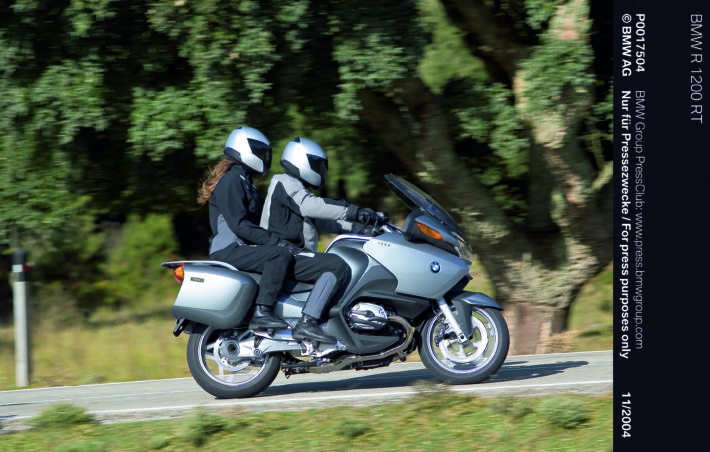
The latest RT is a real technological powerhouse, with cutting edge kit like adaptive cruise control, which uses a radar sensor setup to keep a safe distance from other vehicles, a massive colour LCD dash, Bluetooth phone connections and much more. Underneath it all though, it’s got the same RT genetics as that original R100 RT – a smooth, luxurious ride, with the latest technology and brilliant dynamic performance.
10 S1000 XR
The idea of an adventure bike putting out over 150bhp seemed crazy back in 2010. Then Ducati launched its superbike-powered Multistrada 1200, with a barely-detuned version of the Panigale V-twin engine, and suddenly we wondered why we hadn’t had this before.
Giving a tall, comfy, high-tech adventure tourer the same power as your flagship sportsbike just worked: add in top-spec brakes wheels and tyres, some slightly taller suspension and you could go almost as fast as a superbike on smooth fast roads, and even faster when the asphalt gets a bit rougher.
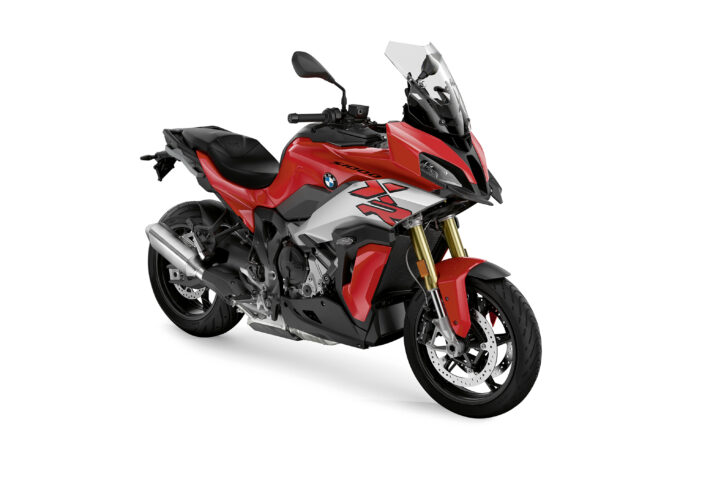
BMW rules the big-bore adventure class with its Boxer GS of course, but there was definitely room for a sportier, more road-focused option. Enter the S1000 XR. Launched back in 2014, it took the basic engine and aluminium frame from the S1000 R supernaked – which in turn took its foundations from the S1000 RR superbike.
So you got an inline-four engine, making 160bhp, in a tall chassis with upright riding position, plenty of electronic goodies, tipping the scales around 227kg. It was an instant hit, taking plaudits and honours in magazine group tests, and was snapped up by riders looking for high performance in a usable, practical, comfy package.
An update in 2020 saw a new engine, based on the latest S1000 RR unit, but without the ShiftCam variable valve timing setup. Power went up a little, to 166bhp, but the weight has crept up too, thanks to the need for Euro 5 engine emissions compliance.
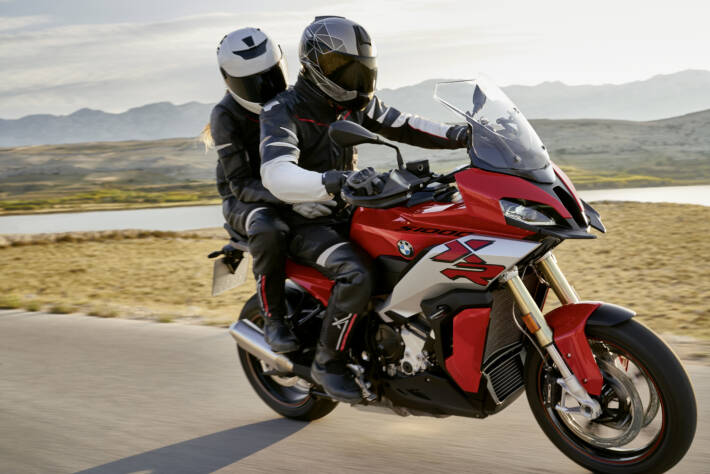
The XR has always had heaps of kit, both standard and optional, from heated grips to massive colour LCD dash, cruise control, smart riding aids, Bluetooth integration, hard and soft luggage, quickshifter, semi-active suspension, and much more.
If you’re buying used, check what options the bike you’re looking at has fitted, and make sure they all work as they should: stuff like ESA suspension can be pricey to repair if anything goes wrong.

One comment on “Top Ten BMWs of the 2000s”
No mention of 2013 F800gt….Brilliant & much overlooked bike. Over 50k miles now.